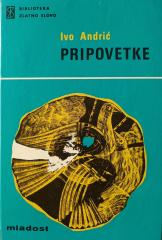
Na Drini ćuprija
Roman Ive Andrića objavljen 1945., remek-djelo je svjetske književnosti i dobitnik Nobelove nagrade 1961. Smješten u Višegradu, priča prati povijest mosta na Drini od 16. do 20. stoljeća, koji je sagradio Mehmed-paša Sokolović.
Most na Drini nije samo arhitektonsko čudo, već i simbol povezanosti između kultura, religija i epoha, ali i svjedok sukoba i patnji. Roman kronološki prikazuje život ljudi oko mosta – Bošnjaka, Srba, Turaka, Židova – kroz stoljeća Osmanskog carstva, austrougarske vladavine i Prvog svjetskog rata. Andrić majstorski isprepliće sudbine pojedinaca, poput djevojke Fate, koja se baca s mosta, ili seljaka koji se bore s poplavama i ratovima. Most stoji kao metafora postojanosti usred prolaznosti ljudskih života, odražavajući složene odnose između Istoka i Zapada.
Kroz bogate opise i pripovjedački stil koji spaja epsku širinu s intimnim trenucima, Andrić istražuje teme sudbine, identiteta, moći i prolaznosti. Roman se bavi univerzalnim pitanjima ljudskog postojanja, ali i specifičnostima balkanske povijesti, prikazujući kako most spaja, ali i razdvaja zajednice. Završava tragično, s djelomičnim rušenjem mosta 1914., simbolizirajući kraj jedne ere. Djelo je hvaljeno zbog svoje filozofske dubine i književne ljepote, ostavljajući trajan utjecaj na čitatelje.
Jedan primerak je u ponudi





